
The Orang Pendek, translated roughly into wild short man, of Sumatra is often thought to be a small, unknown primate, considered by some cryptozoologists, including W.C. Osman Hill, to have a possible connection to the fossils of the Java man, Homo erectus. Natives of Sumatra have generally accepted the Orang Pendek as a genuine animal for centuries, and because they believed it to be a gentle creature that only attacks small animals for food, they regard it with tolerance and respect. One of the first European sightings of the Orang Pendek occurred in 1910, the report stated that the creature was large but low on its feet, ran like a man and was covered in hair.
The best written description of Orang Pendek was documented in 1923, on the island of Poleloe Rimau in Sumatra, by Dutch explorer Van Herwaarden. While hunting for wild pig, Herwaarden was startled by a slight movement in a lone tree. The creature Herwaarden saw was described in Tropical Nature 13 published in 1924, he noted that the unknown primate: 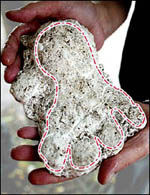 …was also hairy on the front of its body; the color there was a little lighter than on the back. The very dark hair on its head fell to just below the shoulder blades or even almost to the waist. It was fairly think and very shaggy. The lower part of its face seemed to end in more of a point than a man’s; this brown face was almost hairless, whilst its forehead seemed to be high rather than low. Its eyebrows were frankly moving; they were of the darkest color, very lively, and like human eyes. The nose was broad with fairly large nostrils, but in no way clumsy. Its lips were quite ordinary, but the width of its mouth was strikingly wide when open. Its canines showed clearly from time to time as its mouth twitched nervously.
…was also hairy on the front of its body; the color there was a little lighter than on the back. The very dark hair on its head fell to just below the shoulder blades or even almost to the waist. It was fairly think and very shaggy. The lower part of its face seemed to end in more of a point than a man’s; this brown face was almost hairless, whilst its forehead seemed to be high rather than low. Its eyebrows were frankly moving; they were of the darkest color, very lively, and like human eyes. The nose was broad with fairly large nostrils, but in no way clumsy. Its lips were quite ordinary, but the width of its mouth was strikingly wide when open. Its canines showed clearly from time to time as its mouth twitched nervously.
They seemed fairly large to me, at all events they where more developed than a man’s. The incisors were regular. The color of the teeth was yellowish white. Its chin was somewhat receding. For a moment, during a quick movement, I was able to see its right ear, which was exactly like a little human ear. Its hands where slightly hairy on the back. Had it been standing, its arms would have reached to a little about its knees, they where therefore long, but its legs seemed to me rather short. I did not see its feet, but I did see some toes which were shaped in a very normal manner. The specimen was of the female sex and about five feet high. There was nothing repulsive or ugly about its face, nor was it at all apelike. 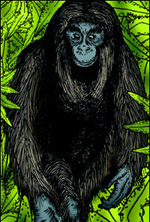 After observing the creature for some time, Van Herwaarden put down his gun and climbed the tree causing the Orang Pendek to move out to a branch and then drop roughly 9 feet to the ground. Van Herwaarden then dashed back to his gun, raised it to shot the creature, but found himself unable to fire, citing that he would have felt like a murderer for killing something so human like. Van Herwaarden returned to Europe with his tale, but no proof. His sighting was discounted by many including one museum curator who rejected the idea on the grounds that his description of events was in his words “to exact”.
After observing the creature for some time, Van Herwaarden put down his gun and climbed the tree causing the Orang Pendek to move out to a branch and then drop roughly 9 feet to the ground. Van Herwaarden then dashed back to his gun, raised it to shot the creature, but found himself unable to fire, citing that he would have felt like a murderer for killing something so human like. Van Herwaarden returned to Europe with his tale, but no proof. His sighting was discounted by many including one museum curator who rejected the idea on the grounds that his description of events was in his words “to exact”.
Following this sighting by Van Herwaarden, and several other reported sightings, several expeditions were mounted by explorers armed with shotguns and a thirst for making their scientific reputations. None of these expeditions where successful in trapping or killing an Orang Pendek, however, they did manage to shoot and kill an innumerable amount of honey bears and sun bears which had the misfortune of being misidentified in the dim jungle light.
In 1924, the national museum in Bogor obtained the cast of an Orang Pendek track, this track was rapidly identified as that of a Malay sun bear, an animal known to sometimes stand on its hind legs. Already skeptical, scientists where ready to write off stories of Orang Pendek’s as a myth. That chance came several years later when, in response to a posted reward, the body of an animal alleged to be a young Orang Pendek was recovered and sent to the National Zoology Museum in Bogor, Java. The discovery of this body made headline news for about 48 hours, until the corpse was identified as that of an adult languor monkey whose body had been altered by a group of locals in hopes of claiming the reward. This hoax all but killed any serious scientific interest in the Orang Pendek. 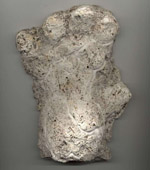 Science continued to write off the Orang Pendek for years, all the while villagers and hunters of Sumatra continued to report sightings of the animal. The Orang Pendek’s scientific front continued to be silent until the 1980’s when British travel writer Deborah Martyr along with British photographer Jeremy Holden engaged in various explorations into the Kerinci region of southwestern Sumatra, some of which where funded by Fauna and Flora International. According to reports, Orang Pendek living in this region had a large potbelly and came in various colors, including dark gray or black in some cases, yellow or tan in others. Martyr’s success and main stream financial backing created a wave of media attention and in early October 1997, newspapers from London to Melbourne related the following sensational story about the Orang Pendek:
Science continued to write off the Orang Pendek for years, all the while villagers and hunters of Sumatra continued to report sightings of the animal. The Orang Pendek’s scientific front continued to be silent until the 1980’s when British travel writer Deborah Martyr along with British photographer Jeremy Holden engaged in various explorations into the Kerinci region of southwestern Sumatra, some of which where funded by Fauna and Flora International. According to reports, Orang Pendek living in this region had a large potbelly and came in various colors, including dark gray or black in some cases, yellow or tan in others. Martyr’s success and main stream financial backing created a wave of media attention and in early October 1997, newspapers from London to Melbourne related the following sensational story about the Orang Pendek:
The creature stumbled across the wire, triggering the camera shutter, capturing its image on film. This was a picture of an ape walking almost erect; a creature with a long red mane that could be man’s nearest cousin, a new species of primate that could re write the books on evolutionary.
As word of these photographs filtered out to the world’s zoology and anthropology communities the debate over there authenticity and the identity of the animal contained with in began. Unfortunately, the newspaper’s article could not have been more wrong. According to Loren Coleman, expedition members involved in the discovery had seen and cast footprints, but had no clear photographs of the creature. After months of investigations, these expedition members where able to confirm that the two fuzzy pictures cited in the article were indeed faked and that an Orang Pendek was not captured on film walking through the crew’s camera traps. 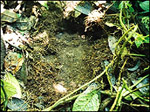 Several other note worthy researchers have been conducting investigations into the Orang Pendek of Sumatra. Claude Petit, professor and biologist, as well as a personal friend of Kerinci National Park director Kurnia Rauf, has been looking into reports of the Orang Pendek since 1980. Petit was able to examine plaster casts that were held by the national park office shortly after her examination the office was burnt to the ground as a result of arson. Petit would later describe the cast as about a foot long and 2. 5 inches wide, she also noted that the toes were not noticeable and no arch was evident. Petit was skeptical of its authenticity, suspecting it was concocted to spark the imagination and attention of tourists.
Several other note worthy researchers have been conducting investigations into the Orang Pendek of Sumatra. Claude Petit, professor and biologist, as well as a personal friend of Kerinci National Park director Kurnia Rauf, has been looking into reports of the Orang Pendek since 1980. Petit was able to examine plaster casts that were held by the national park office shortly after her examination the office was burnt to the ground as a result of arson. Petit would later describe the cast as about a foot long and 2. 5 inches wide, she also noted that the toes were not noticeable and no arch was evident. Petit was skeptical of its authenticity, suspecting it was concocted to spark the imagination and attention of tourists.
Two British men, Adam Davies and Andrew Sanderson, while traveling in Kerinci, discovered an odd footprint along with some hair samples, a cast of the footprint and the recovered hair was analyzed by scientists in 2001 through 2003. Doctor David Chivers, a primate biologist from the University of Cambridge, compared the cast with those from other known primates and local animals, he concluded:
The cast of the footprint taken was definitely and ape with a unique blend of features from gibbon, orangutan, chimpanzee and human. From further examination the print did not match any known species and I can conclude that this points towards there being a large unknown primate in the forest of Sumatra.
The hairs where examined by Doctor Hans Brunner, a hair analysis expert from Australia, he compared the hairs to those of other primates and local animals and concluded that they originated from a previously undocumented species of primate. However, years later, Doctor Todd Disotell, a biological anthropologist from New Your University, preformed DNA analysis on these hairs and found nothing but human DNA. He did stress however, that the contamination by people who handled the hairs could have introduced this human DNA and that the original DNA could have decomposed. 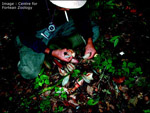 Some researchers feel that the Orang Pendek may be nothing more than a case of mistaken identity, they state that local animals like the sun bear is a likely source of these sightings. Reports of the creature’s human like foot prints can be explained in this theory as these bears are known to have somewhat human looking feet. Another possible animal to explain sightings of the Orang Pendek is the gibbon, which are known to occasionally descend from the tree tops to the ground and walk on two legs for short periods of time. However, locals who claim to have seen the Orang Pendek argue that they have grown up in and around the forests and are very familiar with local wildlife including bears and gibbons, and that the Orang Pendek are neither.
Some researchers feel that the Orang Pendek may be nothing more than a case of mistaken identity, they state that local animals like the sun bear is a likely source of these sightings. Reports of the creature’s human like foot prints can be explained in this theory as these bears are known to have somewhat human looking feet. Another possible animal to explain sightings of the Orang Pendek is the gibbon, which are known to occasionally descend from the tree tops to the ground and walk on two legs for short periods of time. However, locals who claim to have seen the Orang Pendek argue that they have grown up in and around the forests and are very familiar with local wildlife including bears and gibbons, and that the Orang Pendek are neither.
Other researchers contest that the Orang Pendek could be a species of undiscovered primate, its reported physical characteristics are different from any other species of animal known to inhabit the area. Even more intriguing is the chance that the Orang Pendek could actually be a form of hominid representing an early stage in human evolution. This theory is possibly backed up by the discovery of Homo floresiensis in October 2004.
These small skeletons found in a cave on Flores Island, located in Indonesia, date back roughly 12,000 years. The skeletons, which where originally thought to be the bodies of children, are roughly 3 feet tall and later determined to be a new, be it very small, species of the genus Homo. The fact that an unknown form of hominid like Homo floresiensis existed so recently in geographically terms, coupled with the similarities between its presumed physical description and accounts of the Orang Pendek have led some researchers to put new stock in a possible undiscovered, short, hair covered hominid still existing in the remote corners of this region to this day.
The Evidence
With the exception of debatable footprint casts, there is no physical evidence to prove the existence of the Orang Pendek.
The Sightings
In 1910, the first westerner’s report of the Orang Pendek was documented
In 1923, on the island of Poleloe Rimau in Sumatra, Dutch explorer Van Herwaarden, while hunting for wild pig was startled by a slight movement in a lone tree. Herwaarden described the creature he saw in Tropical Nature 13 published in 1924.
In 1998, Deborah Martyr, Orang Pendek researcher, claimed to have seen the animal in a tree during one of her many expeditions to the area.
The Sightings
In 1910, the first westerner’s report of the Orang Pendek was documented
In 1923, on the island of Poleloe Rimau in Sumatra, Dutch explorer Van Herwaarden, while hunting for wild pig was startled by a slight movement in a lone tree. Herwaarden described the creature he saw in Tropical Nature 13 published in 1924.
In 1998, Deborah Martyr, Orang Pendek researcher, claimed to have seen the animal in a tree during one of her many expeditions to the area.
The Stats – (Where applicable)
• Classification: Hominid
• Size: 3 – 5 feet tall
• Weight: Unknown
• Diet: Local gown crops, especially corn, potatoes and fruit. Also ginger roots, a plant known locally as pahur or lolo, young shoots, insects and river crabs.
• Location: Sumatra
• Movement: Bipedal Walking
• Environment: dense jungles
|